In an engaging book, Beaten Down, Worked Up – The Past, Present, and Future of American Labor, veteran New York Times reporter Steven Greenhouse relates how working people organized to address similar challenges in the past, how the gains they achieved began to erode, and how working people today are again finding their voice. Like their predecessors, workers are uniting in common purpose to respond to today’s challenges and demand a better world of work for themselves and for future generations.
Enjoy this conversation with one of the nation’s leading labor reporters discussing the past, present, and future of work in America and the role of working people in determining that future.
This article discusses the barriers the lack of affordable childcare presents to parents and working people and the benefits the US would receive if this challenge were addressed
The future of work has received an avalanche of attention over the past several years from the media, academics, and policymakers. However, most discussion has been theoretical and speculative. And the challenges facing opportunity youth have largely been left out of this conversation. Given this context, the Aspen Institute Economic Opportunities Program and Aspen Institute Forum for Community Solutions, with support from the Citi Foundation, developed a practical approach and toolkit that community leaders can use to begin to learn how the future of work is playing out right now in their local economies. The toolkit includes a framework and questions to guide conversations with employers and young adults to learn from them about the nature and structure of work in specific occupations and what’s changing now; a guide to resources for conducting background labor market research to inform conversations; and sights from three organizations that pilot-tested the approach and toolkit in their communities
Companies can play an important role in making online upskilling accessible and relevant to frontline workers. Our latest report documents one partnered approach to designing and piloting an online training program for incumbent workers, led by a food service company, a civic leadership organization, and a local university in Pittsburgh, Pennsylvania. It explores how Eat’n Park partnered with Robert Morris University and the Allegheny Conference on Community Development to design and deliver digital training to frontline Eat’n Park employees. Our profile shares findings from a pilot customer service training program, focusing on the experiences of workers who participated and their managers
Good Jobs, Good Business is a comprehensive toolkit for small business owners seeking to improve job quality. The toolkit includes sections on Employee Compensation, Scheduling and Paid Leave, Hiring and Professional Development, Employee Engagement, Health Benefits, Retirement and Wealth Building, Racial Equity, and Covid-19. Each section helps users develop a business case and provides guidance on implementing new policies. This resource is designed for small business owners but can also be used by partners (including lenders and workforce development organizations) to coach businesses on job quality improvements with potential business benefits.
In this article, the authors present findings from their research demonstrating the benefits of profit-sharing and worker ownership models for both employees and businesses. They describe different models of profit-sharing and also cite past studies documenting a range of benefits for employees participating in these businesses, including higher wages and better benefits compared to peers. This article has application for business leaders exploring different job quality strategies as well as policy and economic development leaders positioned to expand the use of profit-sharing models.
This fact sheet displays the disproportionate effect technological change may have on Black workers and presents potential benefits that effective training programs could have on Black communities. This resource is useful for practitioners seeking to design training programs that center equity.
To make the business case for improving retention, employers can use this simple calculator to get a ballpark estimate of hard costs of turnover. Partners can complete this exercise with businesses to show the value of their services or talent management practices that reduce turnover. Unlike many other turnover calculators, this tool includes both direct costs, such as the cost of hiring or orientation, and indirect costs, such as lower employee morale or poorer customer service.
This report details the findings from a randomized 2019 Gallup survey of over six thousand American workers to understand their perspectives on job quality. The study offers a definition of job quality based on ten dimensions workers care about and provides useful findings and implications about who has a quality job and how job quality impacts quality of life.
This report identifies 12 evidence-based practices companies can use to help break down barriers women face in the workplace while simultaneously creating a competitive business advantage. This resource has applications for employers and the practitioners who work with them to create and implement policies that support a workplace that is gender inclusive.
